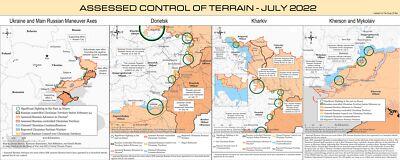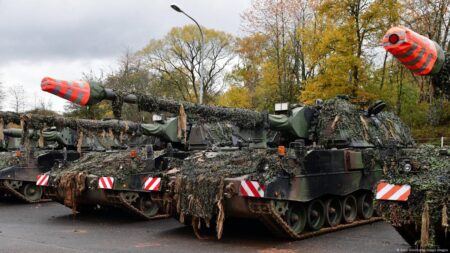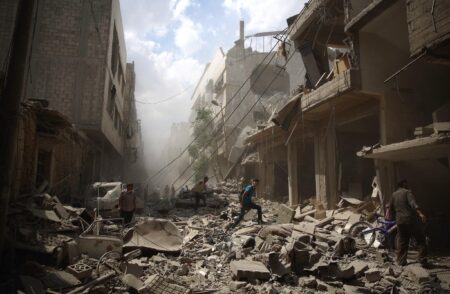The Institute for the Study of War (ISW) released its latest assessment on October 14, 2025, detailing the evolving dynamics of the Russian offensive campaign. As hostilities enter a critical phase, the report provides an incisive analysis of recent battlefield developments, shifts in military strategy, and the broader implications for regional stability. This update offers a comprehensive overview of Russian operations, highlighting key advances, setbacks, and the operational tempo shaping the conflict’s trajectory.
Russian Forces Intensify Efforts in Eastern Ukraine Amidst Supply Chain Challenges
Amid increasing logistical constraints, Russian military units have accelerated ground operations in the eastern theater, focusing on securing key transit hubs and resource corridors. Command reports indicate a shift toward more aggressive tactics, including concentrated artillery barrages and rapid mechanized assaults designed to break Ukrainian defensive lines. However, challenges stemming from disrupted supply chains-particularly shortages in fuel and ammunition-have forced commanders to prioritize critical objectives and rely heavily on local resource acquisition to sustain operational momentum.
Despite these hurdles, Moscow maintains a strategic emphasis on consolidating control over contested regions near Donetsk and Luhansk. Frontline reports emphasize intensified reconnaissance efforts and the deployment of specialized engineering units to repair damaged infrastructure, enhancing mobility for advancing forces. Key operational elements include:
- Enhanced coordination between artillery and armored units for combined arms maneuvers
- Limited but focused use of unmanned aerial vehicles (UAVs) for battlefield intelligence
- Reinforcement of supply lines through rail and road networks amid persistent Ukrainian interdiction attacks
| Operational Factor | Status | Impact on Offensive |
|---|---|---|
| Fuel Availability | Limited | Reduces operational range and tempo |
| Ammunition Stocks | Depleting | Restricts sustained artillery support |
| Infrastructure Repairs | Ongoing | Improves logistics and troop movement |
Ukrainian Counteroffensive Gains Ground Leveraging Advanced Western Support
Ukrainian forces have made significant advances in multiple sectors, capitalizing on enhanced intelligence-sharing and cutting-edge weaponry supplied by Western allies. The integration of advanced drone systems and long-range precision artillery has disrupted Russian command-and-control networks, effectively stalling offensive operations. Troops on the ground report improved situational awareness, facilitating rapid exploitation of weaknesses in Russian defensive lines, particularly in the eastern Donetsk region.
Key factors contributing to Ukrainian gains include:
- Deployment of next-generation anti-tank missiles enabling neutralization of key armored assets.
- Enhanced electronic warfare capabilities degrading Russian communications.
- Close coordination between ground units and Western advisory teams, accelerating operational tempo.
| Sector | Estimated Area Reclaimed | Western Equipment Utilized |
|---|---|---|
| Donetsk Front | 25 sq km | HIMARS, Switchblade drones |
| Luhansk Region | 18 sq km | Javelin, Electronic warfare suites |
| Zaporizhzhia Axis | 12 sq km | Precision artillery, Surveillance drones |
Recommendations for Sustaining Ukrainian Momentum and Disrupting Russian Logistics
To maintain Ukraine’s operational tempo and pressure on Russian forces, it is critical to prioritize enhanced reconnaissance and intelligence-sharing networks. Leveraging drone swarms and cyber reconnaissance can fill informational gaps and anticipate enemy movements, allowing Ukrainian forces to exploit vulnerabilities in Russian defenses with greater precision. Concurrently, reinforcing reserve units and streamlining supply chains will amplify front-line endurance, ensuring sustained offensives do not falter due to logistical constraints or manpower shortages.
Disrupting Russian logistics requires a multipronged approach that targets critical nodes within their supply network. Ukrainian special operations should focus on asymmetric strikes against railway hubs, ammunition depots, and fuel convoys, complicating Russian resupply efforts and forcing command to reallocate scarce resources to rear-area security. Additionally, international support in the form of advanced electronic warfare systems to jam communications and GPS signals can introduce chaos into Russian resupply routes, amplifying the tactical impact of Ukrainian ground maneuvers.
| Target Type | Impact | Recommended Tactics |
|---|---|---|
| Railway hubs | Disrupt troop and equipment movements | Precision drone strikes, sabotage teams |
| Fuel depots | Limit operational reach of Russian forces | Long-range artillery, UAV reconnaissance |
| Ammo stockpiles | Deplete combat sustainment | Special forces raids, electronic jamming |
Insights and Conclusions
As the conflict continues to evolve, the October 14, 2025, Russian Offensive Campaign Assessment underscores the dynamic nature of the battlefield and the complex strategic calculations at play. Monitoring these developments remains crucial for understanding the broader implications for regional stability and global security. The Institute for the Study of War will continue to provide timely, in-depth analysis as the situation unfolds.




